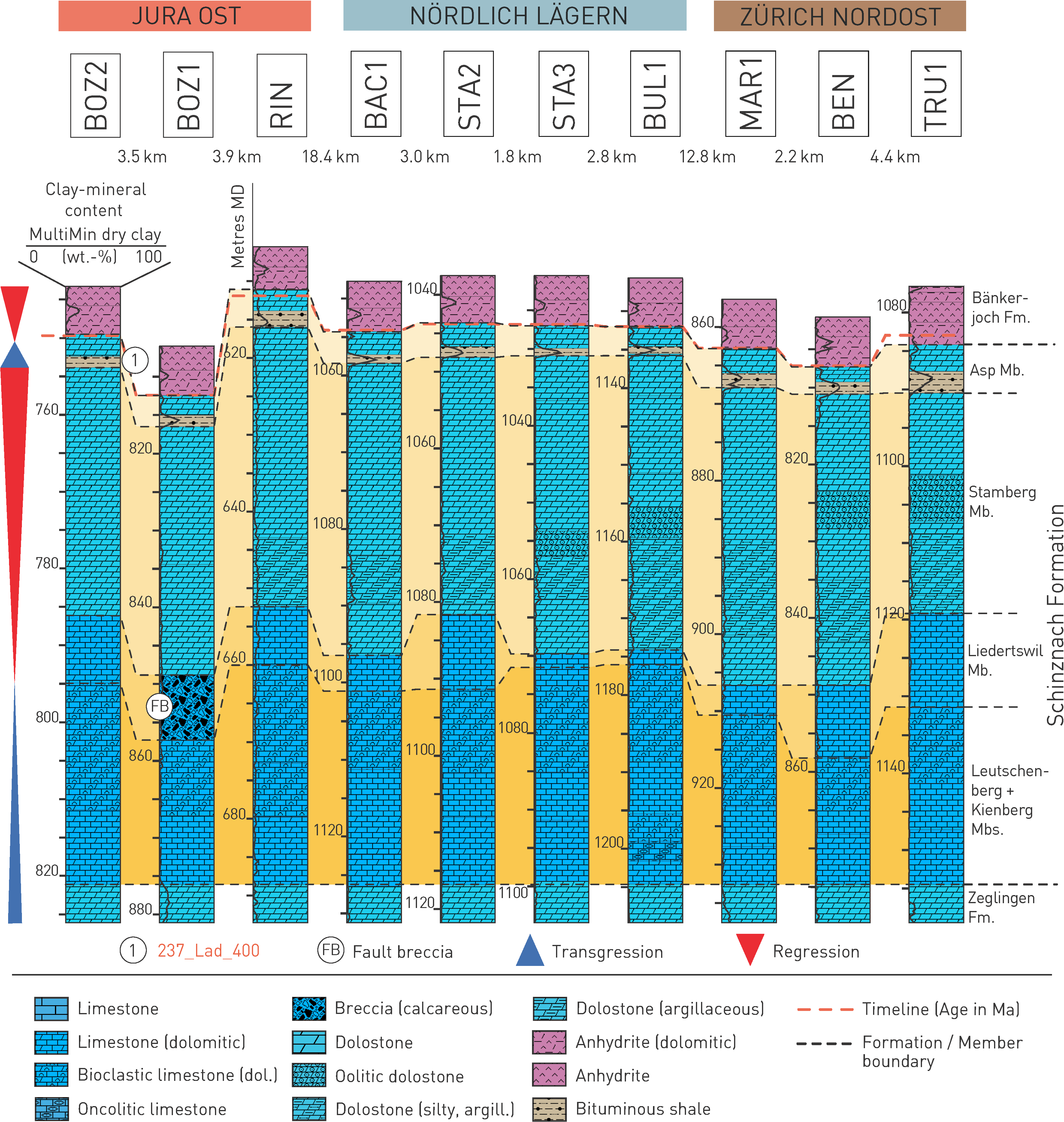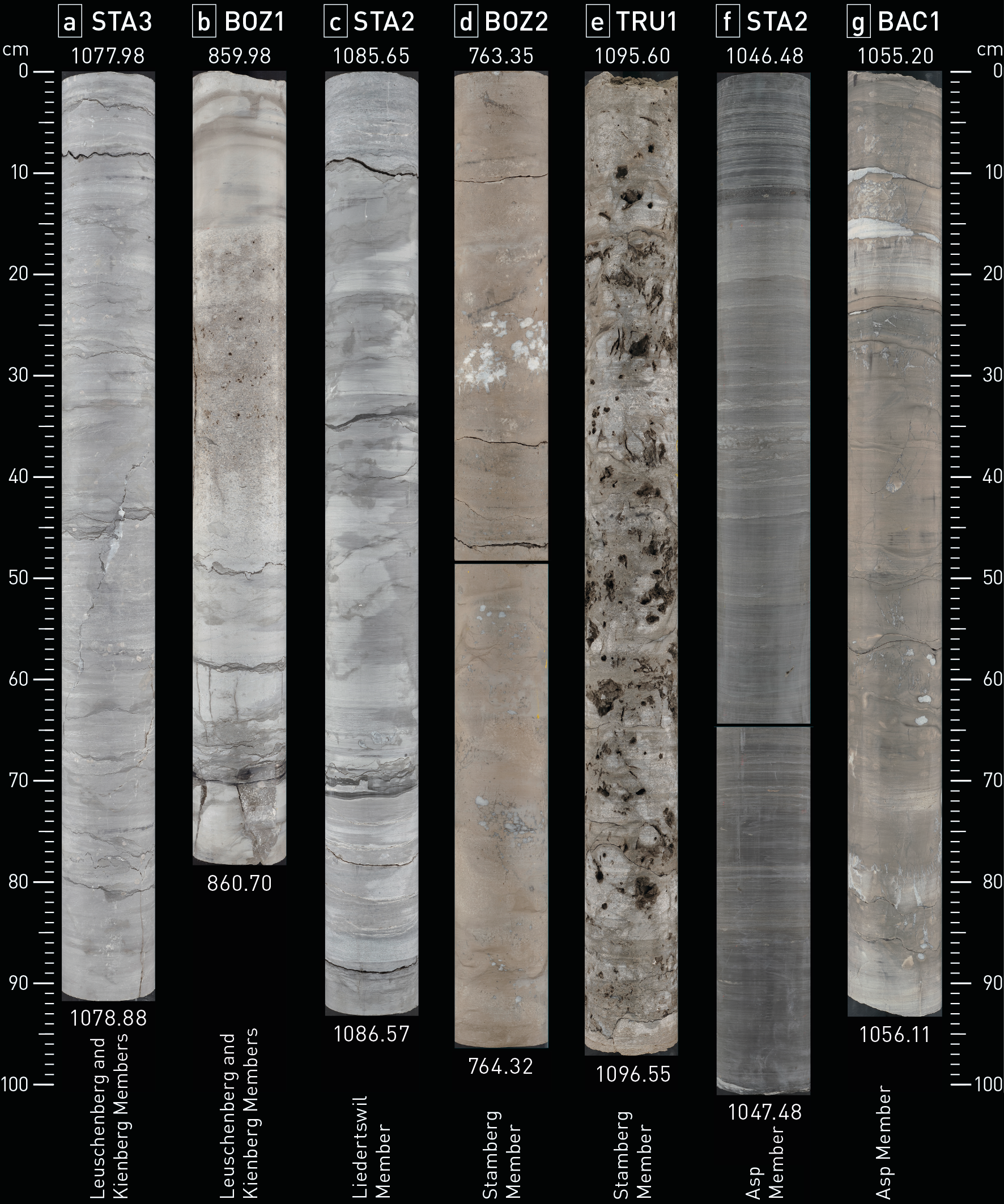The Schinznach Formation was deposited in the southern part of the Central European Basin between the London Brabant Massif in the west and the Vindelician – Bohemian Massif with its Alemannic promontory in the east and southeast (note: for cardinal points the present geographic reference system is used as plotted in the depositional maps). During the Middle Triassic, the basin was temporarily connected to the Neotethys by seaways in the east (Silesia and Eastern Karpathian Gates) and west (Burgundy Gate). The depositional environment was characterised by a carbonate platform to ramp transition in a shallow epicontinental sea (Adams & Diamond 2019, Warnecke & Aigner 2019). The Schinznach Formation is characterised overall by medium sedimentation rates (Fig. 4‑4, Fig. 4‑5, Fig. 4‑6); however, sedimentation rates must have varied temporarily.
Together with its neighbouring lithostratigraphic units, the Schinznach Formation comprises two major transgressive to regressive sequences (Adams & Diamond 2019). The first transgression is expressed by the evaporitic sedimentary rocks of the upper Zeglingen Formation and continues through the deposits of the Leutschenberg and Kienberg Members (Fig. 4‑8). The first regression is expressed by the sedimentary rocks of the Stamberg Member and ends with the strata at the top of the Stamberg Member; the top also corresponds to an unconformity. 3D seismic facies interpretation could indicate exposure-related dissolution in the Stamberg Member (Nagra 2024a, 2024b, 2024c). The second transgression led to the deposition of the Asp Member in a brackish to deltaic environment as expressed by strata at the base and inter- to subtidal coastal sediments towards the top. The second regression is mainly represented by the evaporitic sabkha environment of the overlying Bänkerjoch Formation.

Fig. 4‑8:Stratigraphic borehole correlation of the Schinznach Formation
For lithological nomenclature refer to Naef et al. (2019). Clay-mineral content after Becker & Marnat (2024) . Some of the boundaries and lithologies as discussed in the original reports were adjusted to integrate all presented borehole data.

Fig. 4‑9:Selected core photos of the Schinznach Formation
(a) Grey, moderately fossiliferous (crinoids) limestone, slightly to moderately bioturbated, stylolites with thin argillaceous coatings; (b) light grey limestone and medium grey calcareous marl, bioturbated with grey, porous, bioclastic limestone bed; (c) grey, partly bioturbated and glauconitic limestone; (d) beige dolostone with white irregularly shaped anhydrite nodules; (e) beige grey dolostone with abundant vugs; (f) dark grey bituminous shale; (g) greyish brown dolostone with white anhydrite nodules and nodular layers.

